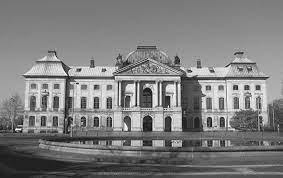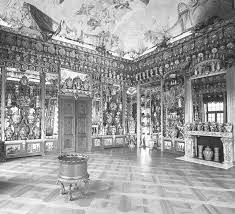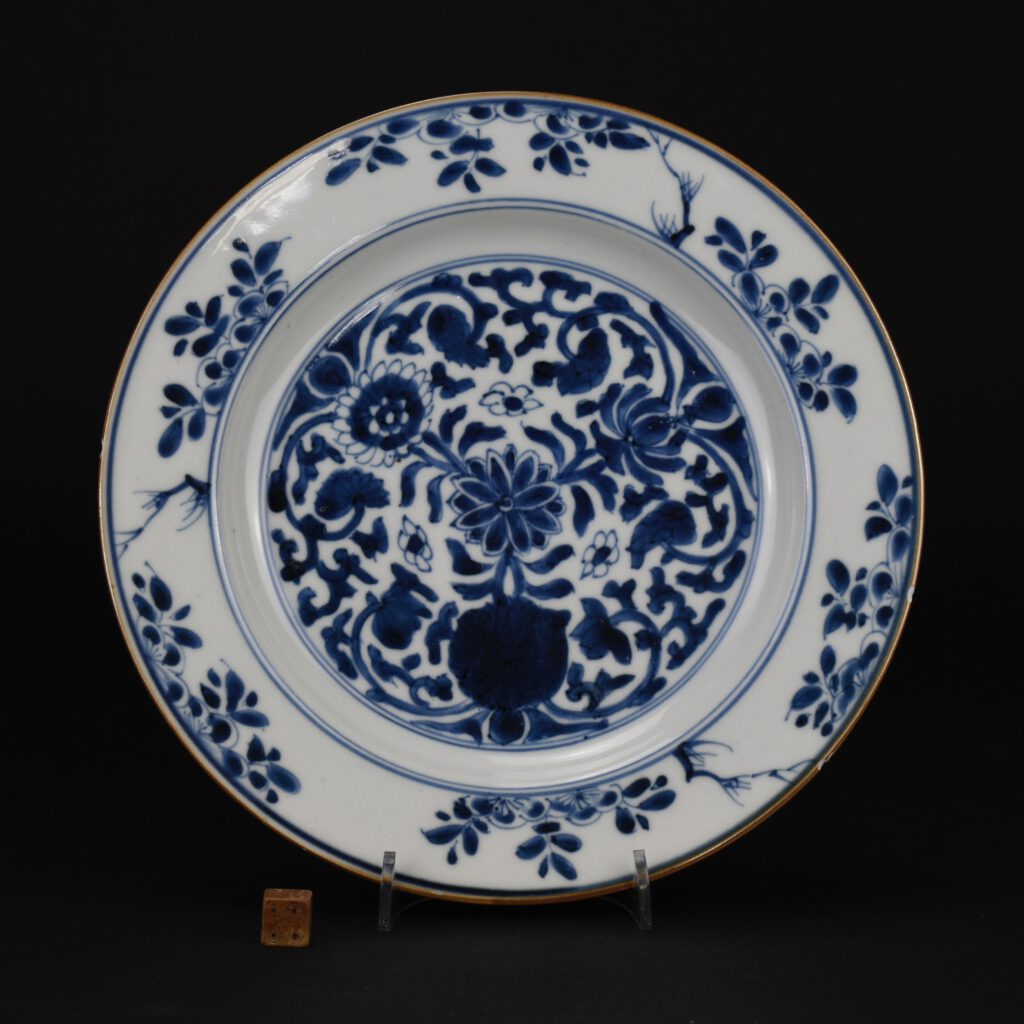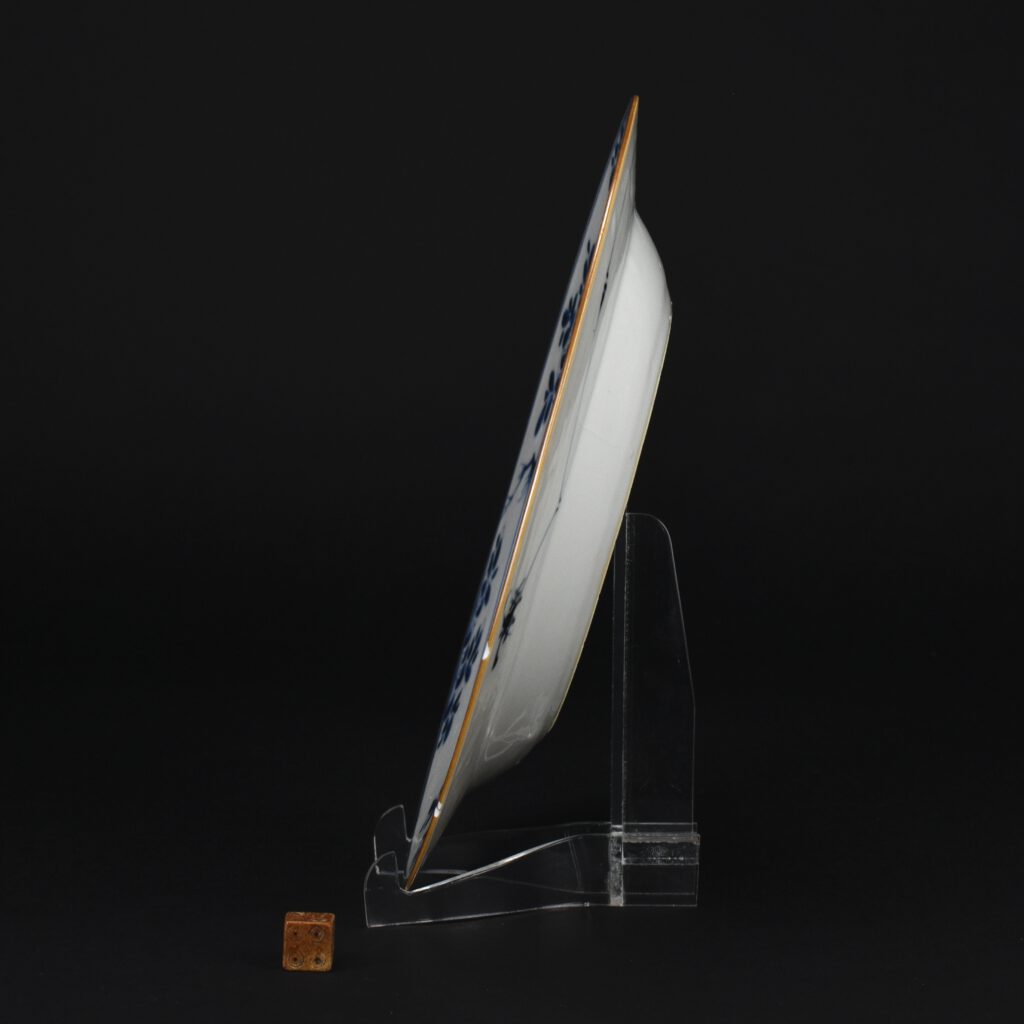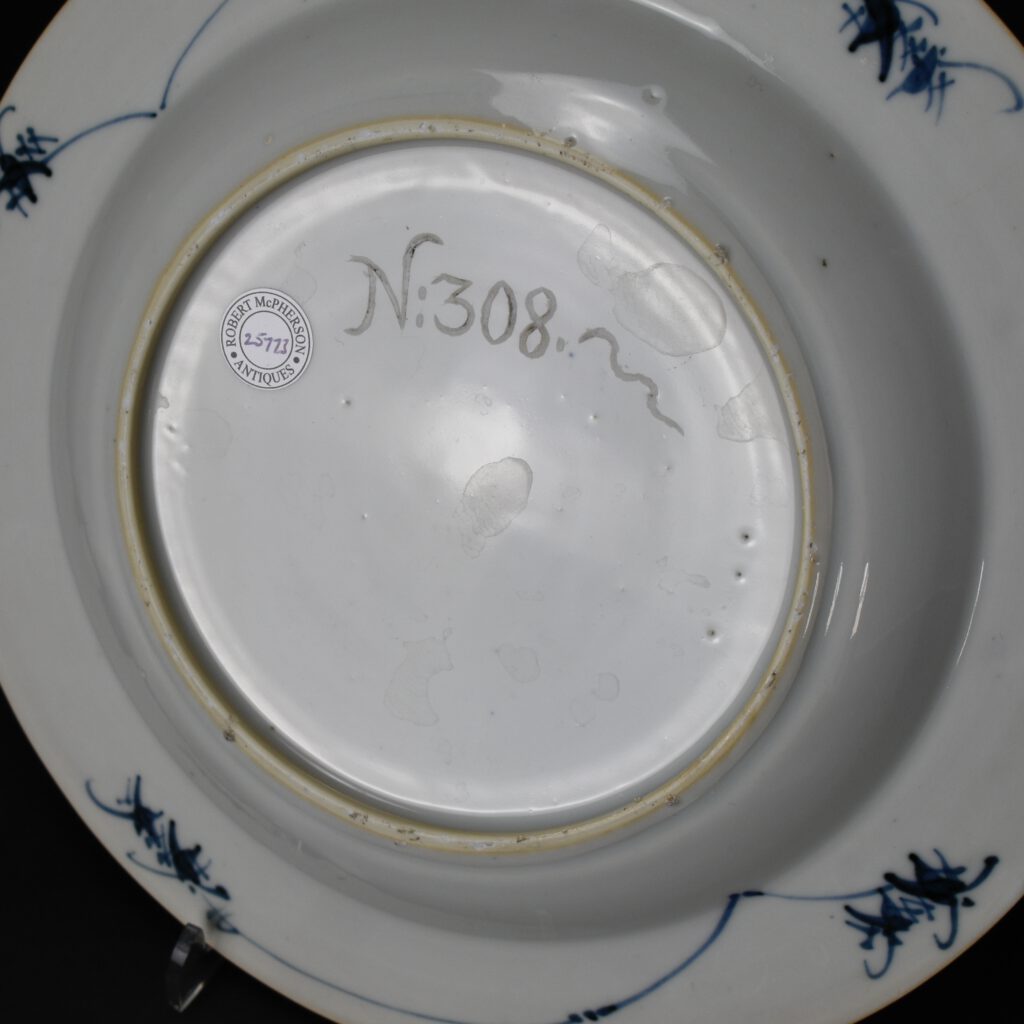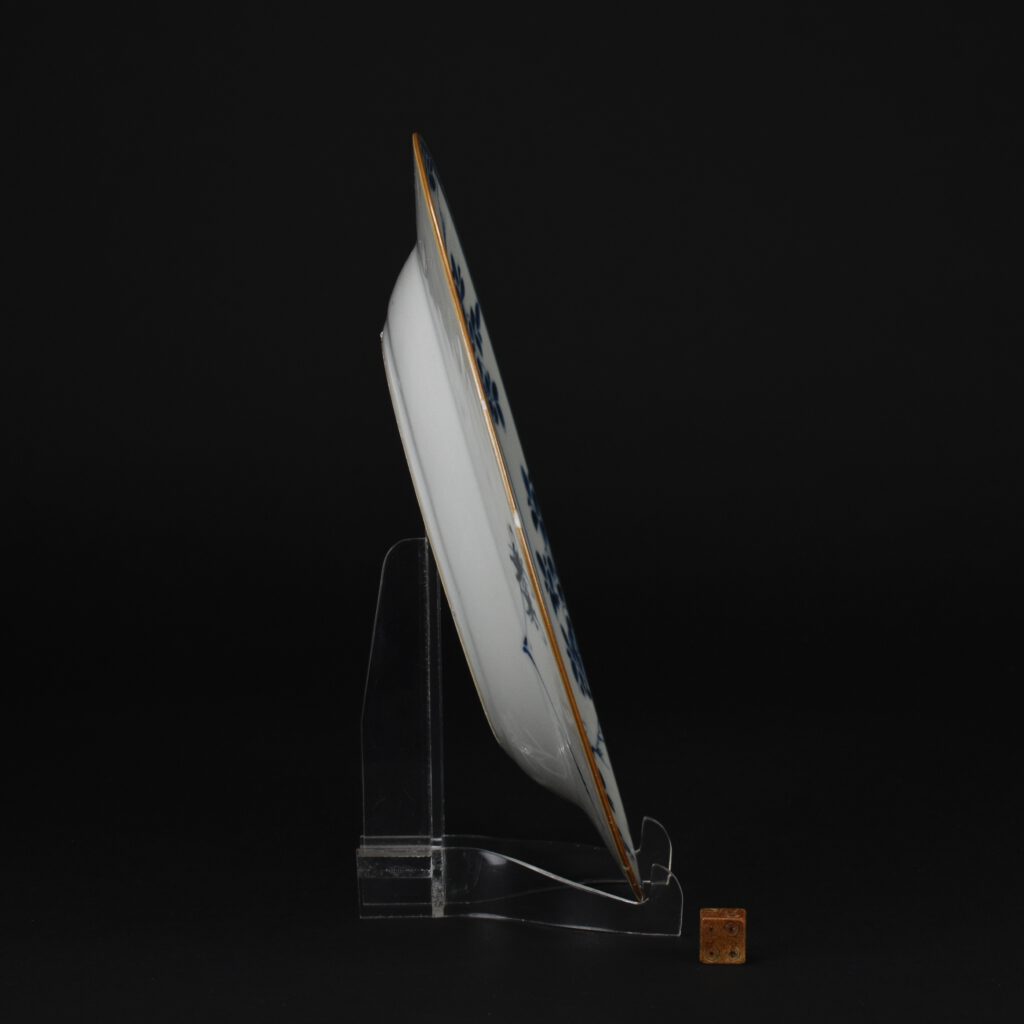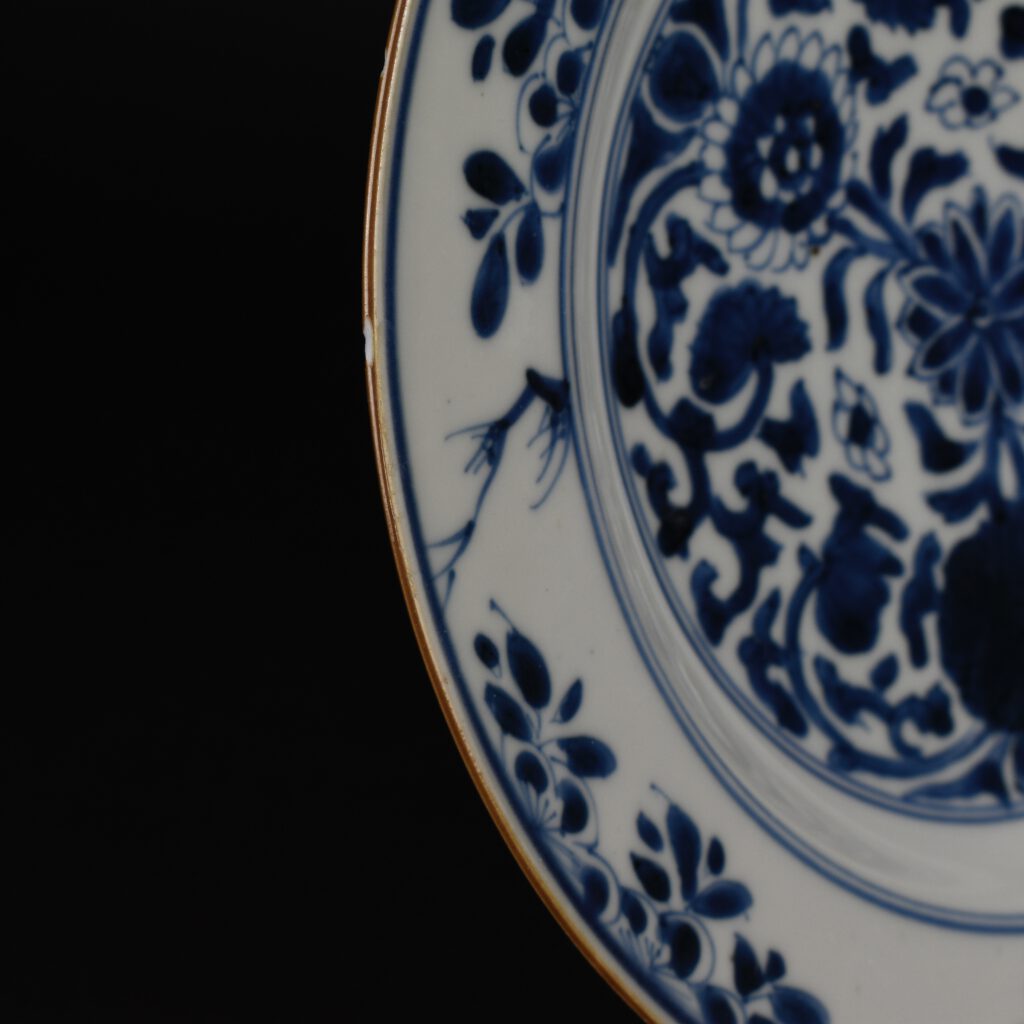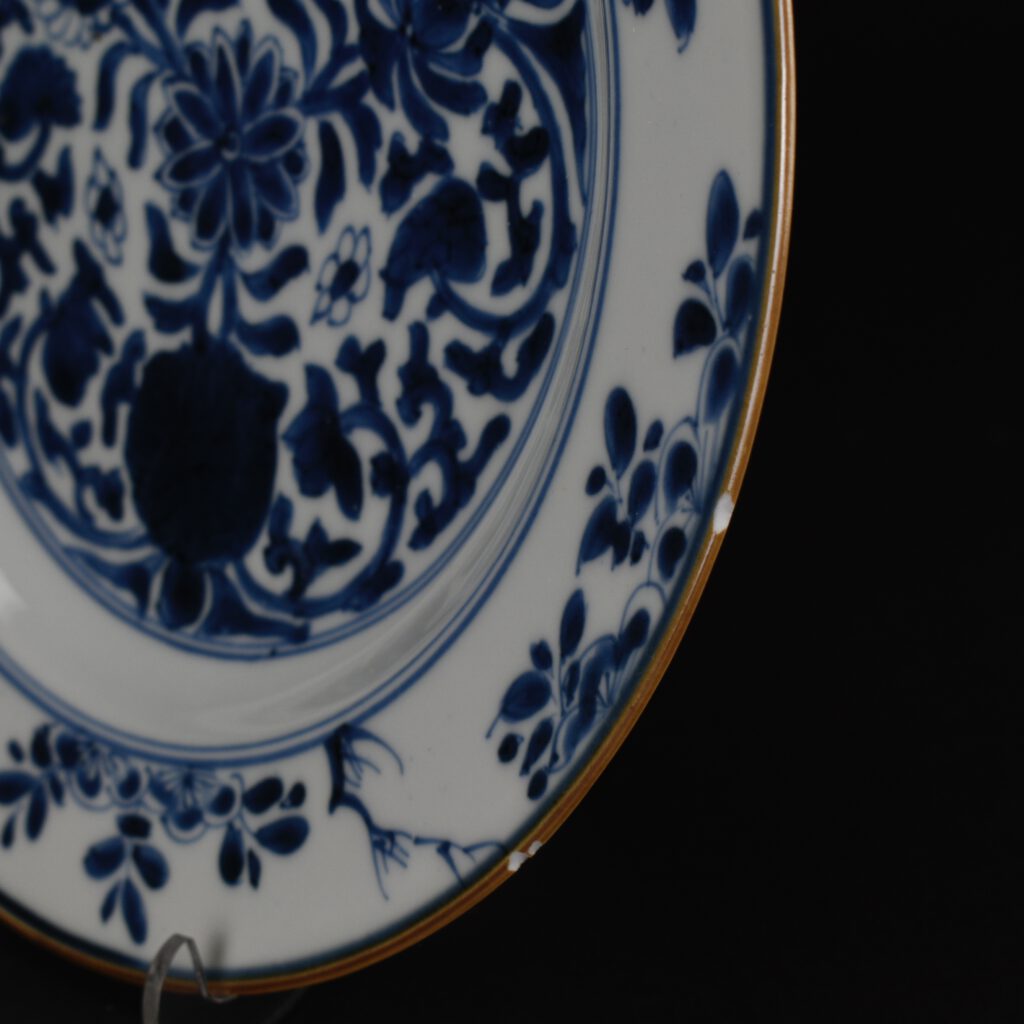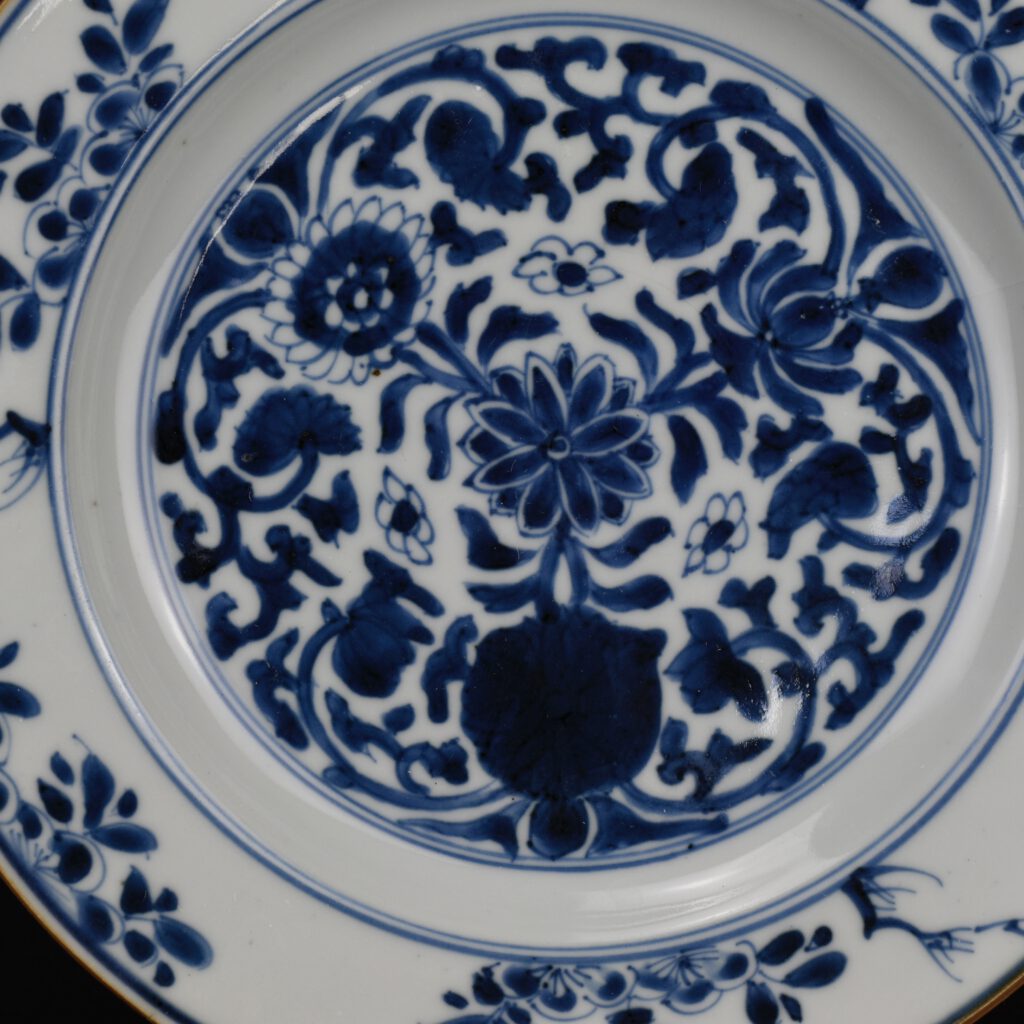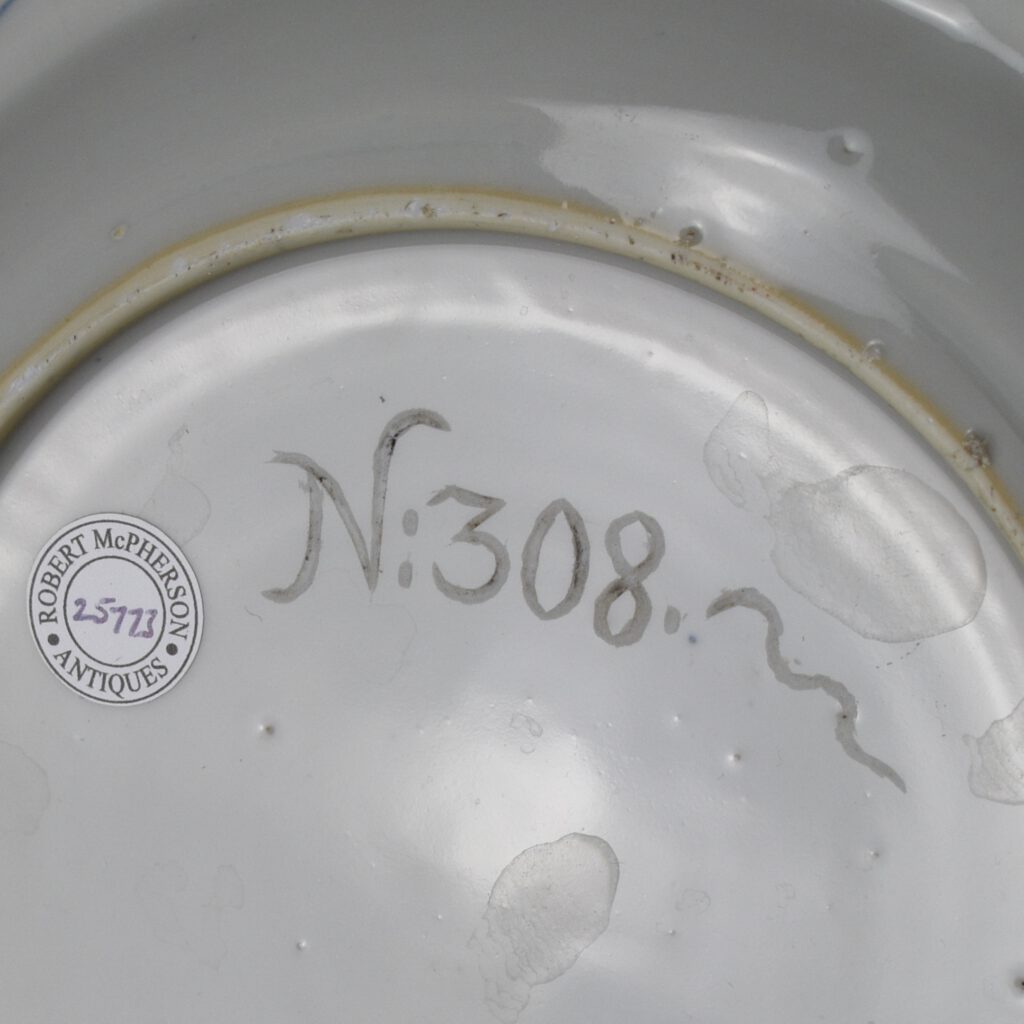
A Kangxi Plate From the Collection of Augustus the Strong
A Kangxi Plate From the Collection of Augustus the Strong, the based with a wheel engraved Palace Inventory mark N:308 and underneath and then a wiggly line. N:308 is listed as being purchased from Count Flemming, Bassetouche & Konspruck in 1723. These these engraved marks used to be called Johanneum marks. This early 18th century blue and white porcelain plate would have been new, or nearly new when it was added to the Royal Collection in Dresden, Japanisches Palais (Japanese Palace).
SOLD
- Condition
- A long but very clean hairline crack from the rim c.4.5 cm. Small chips.
- Size
- Diameter 21.8 cm (8 1/2 inches).
- Provenance
- Royal Collection at The Japanese Palace, Dresden, Wheel Engraved 'Johanneum' Inventory mark to the base : N=587 and underneath that WW.
- Stock number
- 25773
Information
Augustus the Strong 1670 - 1733
Augustus II (1670-1733) King of Poland and Elector of Saxony known as Augustus the Strong. Augustus`s great physical strength earned him the nicknames `the Strong`, `Saxon Hercules` and `Iron Hand`. He liked to show that he lived up to his name by breaking horse shoes with his bare hands. His ancestor Cymburgis of Masovia was also noted for her strength. Augustus the Strong owed allegiance to the Imperial Habsburgs as a member of the Order of the Golden Fleece. Augustus the Strong owed allegiance to the Imperial Habsburgs as a member of the Order of the Golden Fleece. As Elector of Saxony, he is perhaps best remembered as a patron of the arts and architecture. He established the Saxon capital of Dresden as a major cultural centre, attracting artists and musicians from across Europe to his court. Augustus also amassed an impressive art collection and built fantastic baroque palaces at Dresden and at Warsaw. As a politician, he is nowadays not held in high esteem in Poland, getting blamed for embroiling the Polish-Lithuanian Commonwealth in the Great Northern War. His attempts at internal reforms and at bolstering the royal power are considered to have come to naught, while his policies are said to have allowed the Russian Empire to strengthen its influence over the Polish-Lithuanian Commonwealth

Japanisches Palais (Japanese Palace)
The Japanisches Palais (Japanese Palace) is a Baroque building in Dresden, Germany, on the Neustadt bank of the river Elbe. Built in 1715, it was extended from 1729 until 1731 to store the porcelain collection of Augustus the Strong that is now part of the Dresden Porcelain Collection. However, it was never used for this purpose, and instead served as a library.
